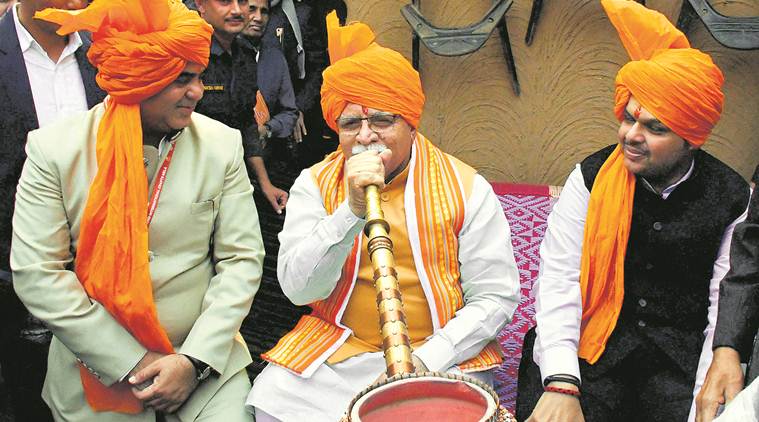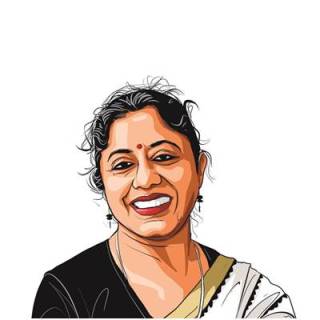What happened in Panipat, 1761?
So who was the enemy in 1761? Was there an enemy in the singular? Can we find parallels in the 18th century for the times we live in? What was the battle all about? And what were its immediate consequences?

The plains of Panipat, well known as a site of decisive military action in India’s recorded history, are back in the news. This time, preparations are afoot for a different battle. There is the blistering call for a sustained crusade against the enemy, and to reverse the slide to enslavement — alluding to the fact, as some historians have maintained, that it was after 1761 when the Marathas, one of the contenders in the Third Battle of Panipat, became a spent force, that the English East India Company emerged from the margins, drawing strength from the treasures of Bengal, to emerge as the masters of Hindustan.
So who was the enemy in 1761? Was there an enemy in the singular? Can we find parallels in the 18th century for the times we live in? What was the battle all about? And what were its immediate consequences?
The 18th century was a period of profound change in the Indian subcontinent as the Mughal Empire gave way to regional powers, many of whom, like the Marathas, aspired to, and almost achieved, imperial status. The century saw an array of social movements, organised around religion, community articulations, and agrarian expansion, often crystallising into coherent political entities. It was a period made for political adventurism, with shifting alliances making any political calculation virtually impossible.
In this cauldron was a heady mix of religious invocation that did not always correspond to the cleavages that we assume to exist between Hindus and Muslims. In terms of realpolitik, what mattered was the steady growth of Maratha power northward, in the form of both territorial control as well as mediation in matters of deciding succession in regional states. Maratha operations were not especially well received — for example, by Jat ruler Surajmal.
The Maratha push to the north encountered the equally resolute push from the Afghan Durrani chief into the Punjab and North India, the result being a bloody campaign fought on the plains of Panipat. The Durrani chief was able to enlist the support of several malcontents (the Rohilla chief, the Nawab of Awadh) and most impressively, of the warrior ascetics, the Naga sanyasis and Gosains, whose insane gallantry and casual nakedness threw the Afghan soldiers off-kilter!
The events leading to the final encounter between the Afghan and Marathas make for compelling reading. One thing was certain though: the fragility of alliances and the overriding greed for immediate gain undercut possibilities of any long-term balancing of imperial aspirations with those of local powerholders.
The Durrani Afghan chief was barely interested in the crown of Hindustan and wanted above all to keep the Punjab as his milch cow, while the Marathas were keen to control Delhi affairs as well as to restrain other contenders — being prepared for untenable agreements, and remaining impervious to any sort of counsel.
What distinguished Maratha politics was its fragmentation and the overriding rivalry between various sardars, the case of Malhar Rao Holkar and his reliance on Rohilla leader Najib Khan being an instance in point. The precarity of hastily conceived alliances, the extreme cynicism that accompanied all political and diplomatic engagements, blurred distinctions between friend and foe. Therefore, when the two contenders finally met in Panipat, the stage was set for confusion, extraordinary feats of courage, and equally despairing episodes of sheer opportunism.
The final act in the drama, however, was not predictable. With gifted commanders like Sadashiv Rao Bhau, with the select forces of Vishwas Rao, the Peshwa’s son, marching towards North India with Ibrahim Gardi, a French-trained Muslim general who had worked for the Nizam of Hyderabad, it seemed the Marathas would take the honours. Only a last-minute constellation of adverse weather conditions, diplomatic isolation, want of provisions, and the disagreement between the Maratha sardars strained the Maratha forces.
Abdali moved in stealthily, squeezing the line of supplies for the Marathas, and outwitting them in what was essentially a battle of attrition. Neither side could goad the other into firing the first salvo until the starving Maratha camp finally responded, abandoning well thought-out military plans. The struggle and carnage that followed lasted seven hours — by which time some of the great commanders had died, leaving the Peshwa in Poona to decode what remains in history a rare epistle carried by a banker: “two pearls dissolved, twenty-five gold mohurs have been lost, and of the silver and the copper the total cannot be cast up”.
It is, of course, tempting to read parallels and prophesies, especially when the contemporary political scene seems to have resemblances to cynical power politics. What was certain then was that the Battle of Panipat temporarily halted the Maratha advance, and enabled the East India Company to maintain a low profile for a while, consolidate its early gains in Bengal, and subsequently make a strong bid for supremacy in the subcontinent.
What is certain now is that the stakes are high, the narrative overcharged with religious symbols, while on the ground, all contenders have to grapple with the realities of power and go beyond the equations of caste, community, and the bazaar.
Lakshmi Subramanian is a Fellow at L’Institut d’études avancées de Nantes. She has written extensively on the history of pre-colonial and early modern India






































No hay comentarios:
Publicar un comentario